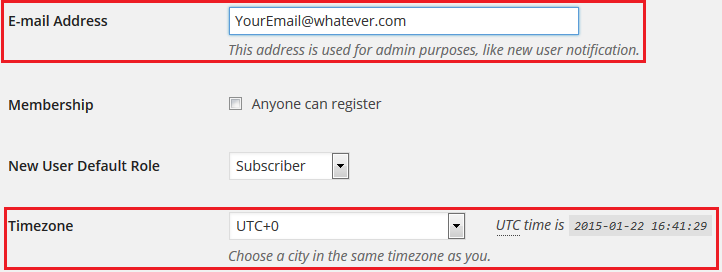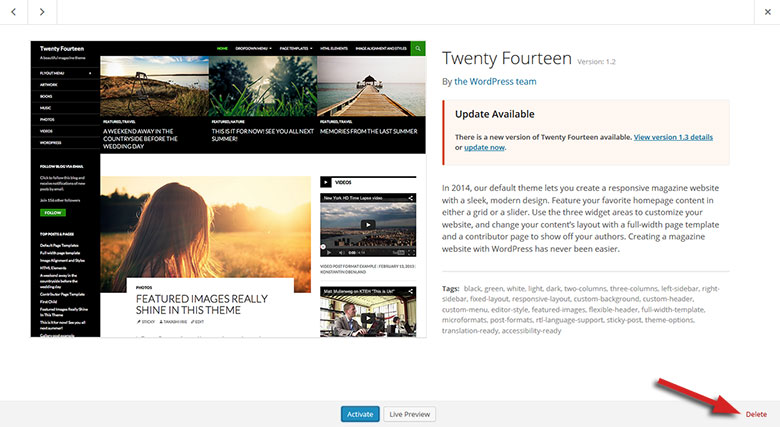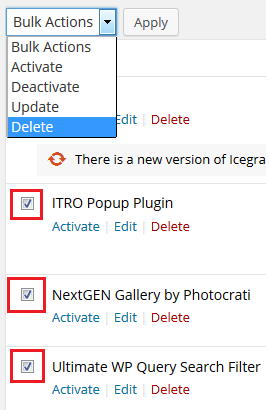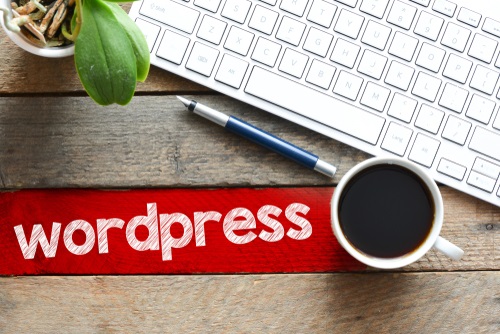This post was last updated on 6/21/2019
In this article, I’m only going to write about the important things to do after installing WordPress, things that apply to almost every WordPress installation.
I’m going to tell you what settings you should implement, what to delete, and what plugins to install.
1. Prevent search engines from crawling your site
Until you go live with your site, everything will be pretty messy, so it’s best to prevent search engines from crawling and indexing your site.
The best way to do this is to password-protect your whole website because web crawlers can’t access content that is behind a password.
You can do this through cPanel or you can install a plugin, such as Password Protected.
2. Add an e-mail and set your timezone
Go to Settings -> General, add an e-mail for notifications and select your desired timezone and format.

3. Change your permalink structure
The 3rd thing to do after installing WordPress is changing your permalinks. The default permalink structure isn’t SEO nor user-friendly.
So, you should go to Settings -> Permalinks and choose Post name.

4. Rename the Uncategorized category
When you install WordPress, among other default things, you get a category named ‘Uncategorized’.
The reason you want to rename this is that you or one of your editors might forget to select another category or deselect this one when publishing a post.
Such a minor error could make your users think that you are careless or even unprofessional.
“Can’t I just delete it?”. Nope, you can’t. You can’t delete it because WordPress needs to publish a post in a category. So, if someone forgets to select one, WordPress will post the article in the default category.
In order to rename the Uncategorized category, you need to:
- Go to Posts -> Categories;
- Once there, hover your mouse over the Uncategorized category;
- Click on Quick Edit;
- Rename the category however you see fit (e.g. Miscellaneous, Other, etc.). Don’t forget to rename the slug as well;
Here’s a video tutorial as well:
5. Delete the themes that you won’t use or need
Another thing to do after installing WordPress is to delete all the themes that you won’t use or need, except one (besides the one you will be using, of course).
You should keep one of the default WordPress themes (e.g. Twenty Nineteen). You need to keep one of those themes because:
- Some themes require the activation of another theme while performing an update. The purpose of this step is to free the theme so it can be deleted;
- When you’re having issues, you might need to perform some troubleshooting, which requires switching to a default theme. I recommend having a staging site for such matters, and not using your live one.
Why should you delete the other themes? Because they unnecessarily occupy space, and some can be exploited by hackers, especially if you don’t update them.
To delete the unused themes:
- Go to Appearance -> Themes;
- Hover your mouse over a theme;
- Click Theme Details;
- Click Delete in the bottom-right corner.

6. Delete plugins that you don’t use
Deleting unused plugins should also be among the things to do after installing WordPress.
Just like the themes, they unnecessarily occupy space, and just because they are deactivated doesn’t mean they can’t cause trouble/conflicts sometimes.
I recently had an issue with a pop-up plugin. An old pop-up kept appearing even though the plugin was deactivated. This was caused by two things:
- The plugin was still keeping stuff in the database;
- The W3 Total Cache plugin was somehow triggering the pop-up.
So, even if a plugin doesn’t cause trouble on its own, when it’s deactivated, another one can trigger it.
Therefore, go to Plugins and start deleting the pre-installed ones that you won’t use, such as Hello Dolly, Jetpack, Akismet, etc.
Check the plugins that you want to delete, choose Delete from the drop-down list, and then click Apply.

Note: Some themes may require Jetpack, for example, in order for everything to work properly. Also, your hosting could install some plugins that it needs. So, be careful!
7. Delete default posts, pages, and comments
Depending on what you use to install WordPress, you might end up with a default post, comment, and page.
Make sure to delete them, so you can get them out of the way.
8. Change the default article settings
Go to Settings -> Discussion and uncheck Attempt to notify any blogs linked to from the article and Allow link notifications from other blogs (pingbacks and trackbacks) on new articles.

They’re ineffective and pretty much useless these days.
Here you can learn more about pingbacks and trackbacks if you wish.
9. Choose what your homepage displays
Go to Settings -> Reading and choose what your homepage will display.

If you have a blog, not a website with a blog page, then choose the first option: Your latest posts.
If you have a website with a separate blog page (https://example.com/blog/), then choose the second option: A static page.
If you have a website without a blog, then choose -Select- from the Posts page drop-down menu.
In order to choose the pages, you’ll have to create and publish them first, even if they have no content.
10. Limit or disable your revisions
When you save or update a post, WordPress will keep a revision stored in your database, leading to unnecessary bloat.
So, it’s best to either limit your WordPress revisions or completely disable them if you think that you don’t need them.
Here’s a plugin that you can also use.
Conclusion
These are the 10 most important things to do after installing WordPress.
Of course, there are other important things as well, such as installing must-have WordPress plugins, changing your site’s title, etc.
But I only wanted to highlight the ones that go with every WordPress installation; the ones you should do right after installing WordPress. The rest can wait a bit and can also differ.
If you start configuring your theme or something like that, right after installing WordPress, you can get carried away and forget about these small but important steps.
That’s a Wrap
Hope you enjoyed the post and found it useful!
If you have any questions or thoughts, drop a comment or send a message via contact or Facebook page.
You can also hit the follow button on Twitter and subscribe to the YouTube channel.
Don’t forget to share the post to help out others!


I think the BackWPup plugin is great but I typically use and recommend Duplicator.
Yep, that’s good too, especially for site migration.
Is it necessary to delete unused plugins or we can deactivate it.
If you’re not planning to use them anymore, then it’s better to delete them.